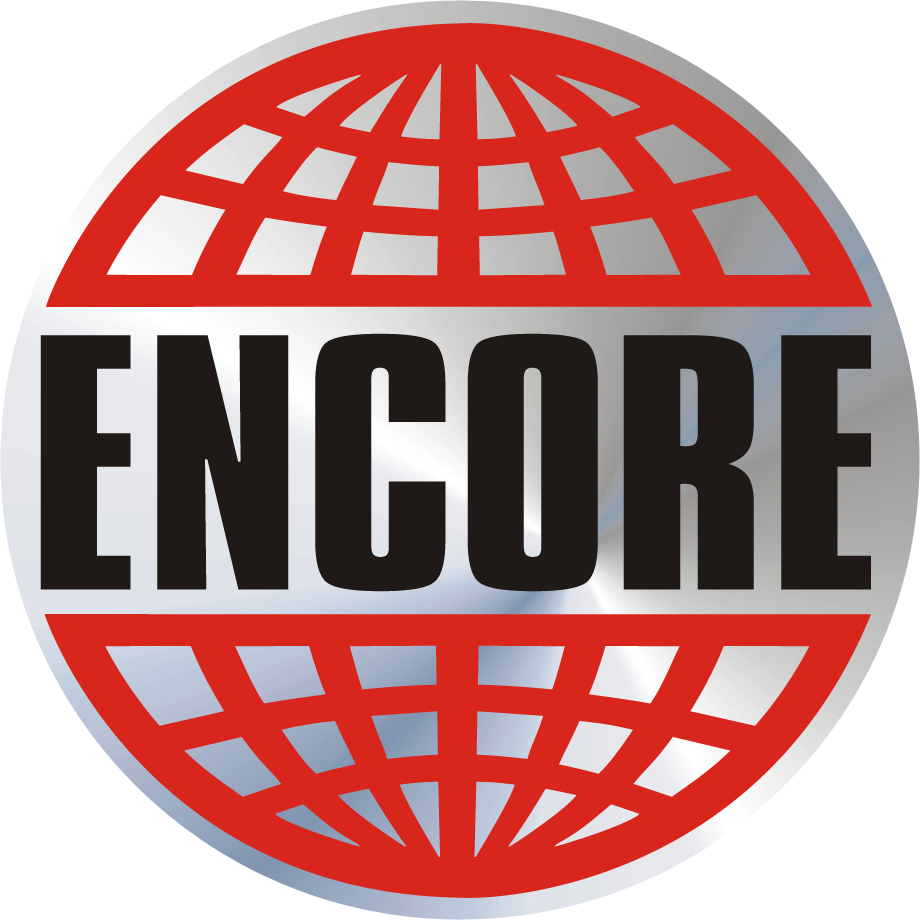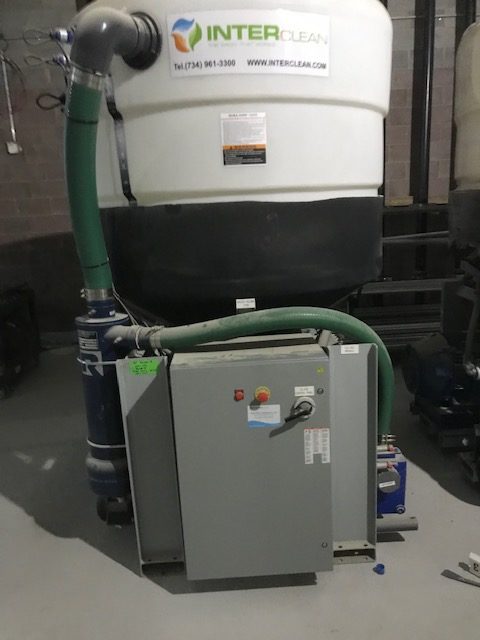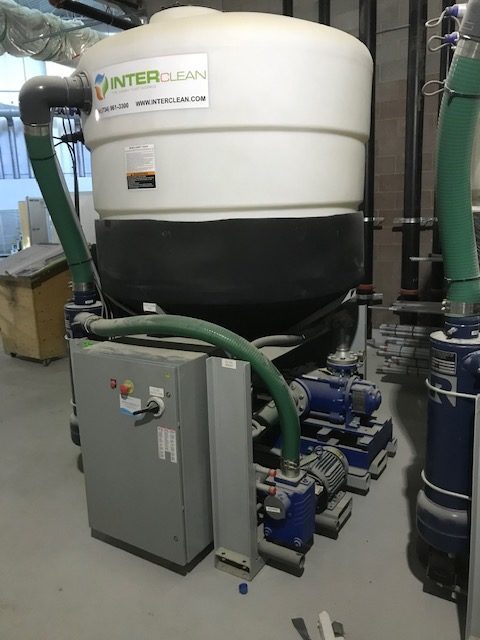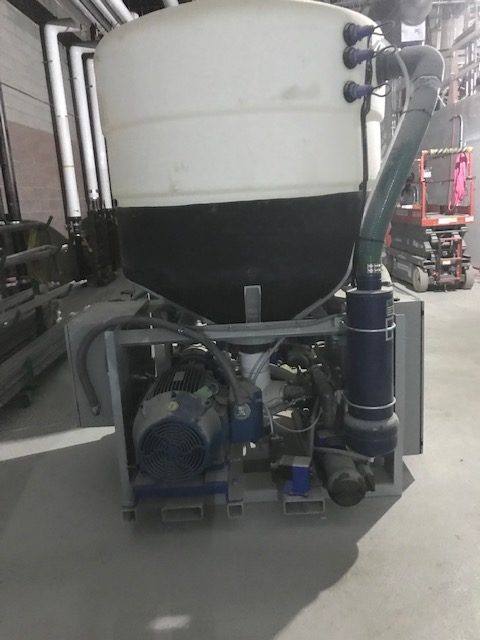We were presented with another problem to be solved, we called this one The Bus Wash Enigma. NETG project; The new bus barn off Yellowhead and Fort Road by the big smokestack.
Another Problem Presents Itself
We were contacted by a major construction company and were asked to help their supplier. They had several fiberglass vessels mounted on a steel base, 6 in total. Compact, little brutes, that appeared to be complete wash packages for the city buses, equipped with pumps, motors and a fiberglass vessel parked on top.
The vessel packages were 101 inches high. The access door was 91 inches.
Our site check was a bit painful. There was no easy way to get thru the door. Each vessel had to be flipped on its side and slid under.
The top 6 ft was just a fiberglass barrel, all the weight was in the bottom; 3250 of the 3500 lbs total weight.
The bottom skid had good structure though, but there were chunky electronic boxes protruding off the sides. The General suggested one side box be removed. That made our task easier; and left a flat solid surface. With the box removed, we could tip the whole skid onto that side.
To do that we needed to first get the vessel in the air. They looked a little like a fat ice cream ball on a skid.
Always Prepare in Advnace
We asked for some holes to be drilled in the skids cross braces to give us 4 solid lift points, 2 on each end.
To lift and lay the vessel over safely and with some control, it’s best to use two separate lifting machines. One thing about Encore, we have gear and we had just the thing for this little problem. We had our mini cranes, they would work, and we had some portable gantries that proved to be perfect for one side of the business.
As we pictured the lift, the lay over, we realized that one set of slings, shackled to the base, would ‘have’ to spread wide enough, app 6 ft; to allow the vessel body to slide thru the slings as it lay over.
No problem, we use a 6-7 ft spreader bar to spread the slings right at the hook.
And if we had an electric mini crane lift the spreader end of the skid, and the gantry rigged to the other; we could tandem lift and lay the vessels over, carefully.
Starting the lift
Once they were over, we planned on using pallet jacks or dolly carts to roll thru the door. Once inside the mother ship, we had enough gear to have another complete set up to re-stand the units. Another mini, with another bar, a 2nd gantry and a full crew. One laying over, the other, sliding thru the door and re-standing. The site had a forklift to cart the units away and place into position, once they were upright.
We arrived on site in the bitter cold, and the offloading, orientation, setting up and organizing and transporting the cranes and the gantries, the chain hoists and the jack and roll gear took some time. We only got one vessel done the first day. But the crew said they ‘had it nailed’.
The next day we finished all 5 by 1 pm.
Mission Accomplished
Our pictures are only the site check and planning detail. Posting of the actual work, is not allowed.
The lifts went very smooth and the gantries, which are on wheels, never moved, which was one of our concerns. They picked straight up and let straight down;
while the mini cranes lifted and swung to accommodate the moving pick point of the vessel package as it laid over or re-stood.
So next time you see a clean city bus, think about how hard they worked just to be able to wash them.








